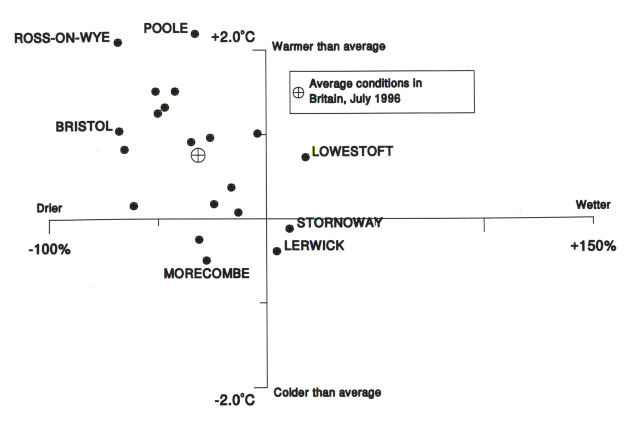Daytime temperatures
July was comfortably warmer than the July's of 1992 and 1993, but not as hot as in 1994 and 1995. Nationwide, the month was about 0.8°C above the average, this anomaly rising to over 2°C in parts of the southwest. The far north of Scotland, and some coastal locations in the north of England were slightly cooler than average. The warmest day of the year so far occurred on July 20 with a nationwide daytime average temperature of 23.7°C, nearly 3°C below the maximum recorded last summer on August 2.
Rainfall
As in 1994 and 1995, rainfall over the UK in July was about 30% below average. Only the far north of Scotland, and isolated locations in the south where heavy thunderstorms occurred toward the end of the month, were wetter than average. Lowestoft, for example, was 20% wetter than usual while Skegness was 40% drier. During the four days of the Open Golf Championship at Royal Lytham, virtually no rainfall was recorded anywhere in the country.
Sunshine
July continued the sunny weather this summer with 12% more sunshine than usual. Most regions of the country enjoyed this sunshine; only the far north of Scotland fell much below the average. The third week of July was especially sunny. Sunshine for the year has now been close to average.
Dr Mike Hulme is a Research Climatologist at the University of East Anglia
| Daytime Temperature | 0.8°C above average, |
| Rainfall | 31% below average; |
| Sunshine | 12% above average. |
| Warmest | Poole | 23.6°C |
| Sunniest | Poole | 280 hours sun |
| Wettest | Eskdalemuir | 80mm |
| Coldest | Lerwick | 13.3°C |
| Cloudiest | Lerwick | 99 hours sun |
| Driest | Guernsey | 14mm |

